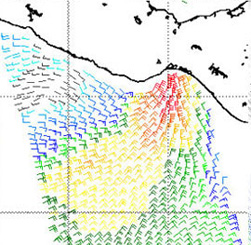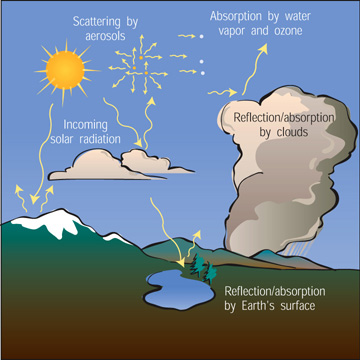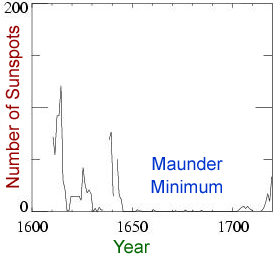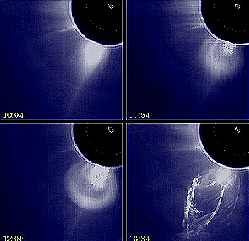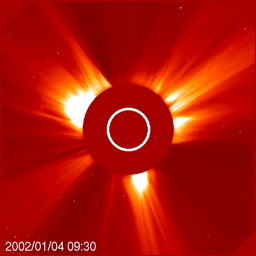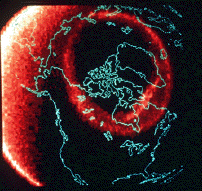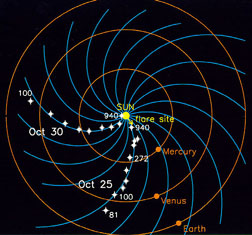Click on image for full size
Courtesy of U.S. Navy/NRL/NOAA
Sun's Effect on Earth's Weather (Wind)
Energy from the Sun is one of the primary drivers of the Earth system. The Sun warms our planet, heating the atmosphere. This energy feeds atmospheric processes and is a primary driver of our weather.The solar cycle, the rise and fall of the number of sunspots on the Sun, has been known since the mid-19th century. Soon after this discovery scientists started to ask how solar variability might affect the Earth's weather.
The solar cycle goes from when the Sun has a minimum number of sunspots (a solar minimum) to when the Sun has a maximum number of sunspots (a solar maximum) back to a minimum. The time between two minimums is about 10.5 to 11 years. Solar activity is related to the solar cycle. Because solar activity (such as coronal mass ejections) is more frequent at solar maximum and less frequent at solar minimum, geomagnetic activity also follows the solar cycle.
Attempts to find correlations between this solar cycle and the Earth's weather proved very difficult. Although this may in part be related to variable weather data quality and the wide range of weather phenomena, it is most likely due to the lack of a significant physical relationship between the solar cycle and Earth’s weather.
One example was a study to see if the solar cycle affected wind patterns on Earth. In 1949, H.C. Willett looked to see if the solar cycle affected long-term variations of wind patterns. He saw the solar cycle as a definite factor in influencing wind variations. He did admit that, "the physical basis of any such relationship must be utterly complex, and is as yet not at all understood." However attempts to confirm his conclusions were not successful.
In fact, over time and with more and more studies and more sophisticated instruments (especially satellites outside the Earth's atmosphere), connections between solar variations and Earth's weather have been found increasingly unlikely. Another result that has withstood some but not all challenges is an apparent connection between solar cosmic rays and Earth's cloudiness.
Through decades of study by scientists around the world, Sun-weather connections have largely been rejected by the scientific community.


